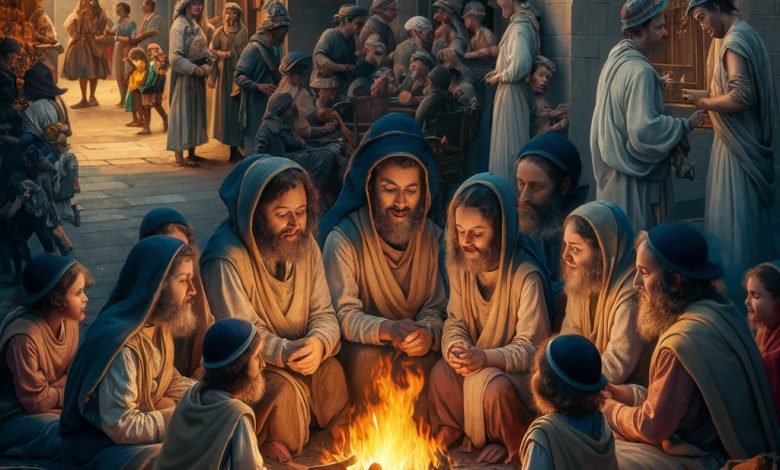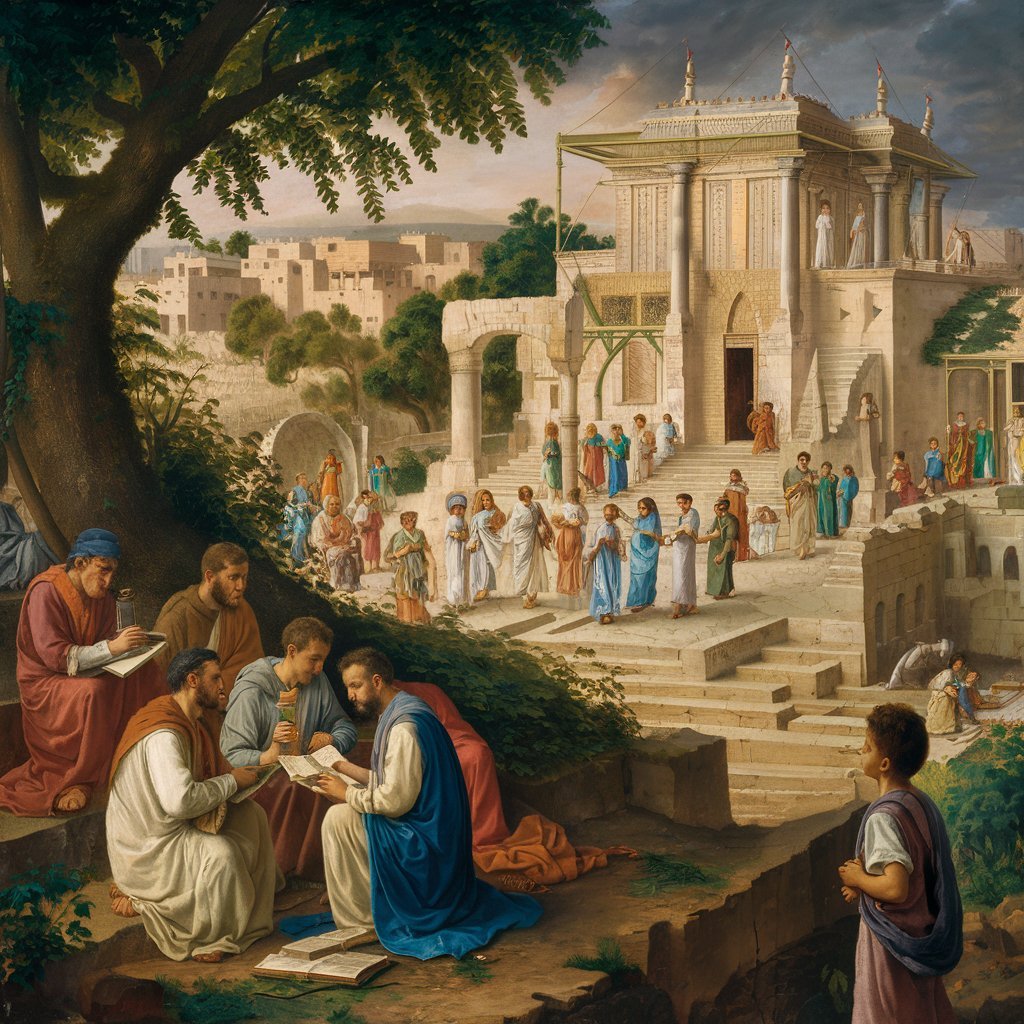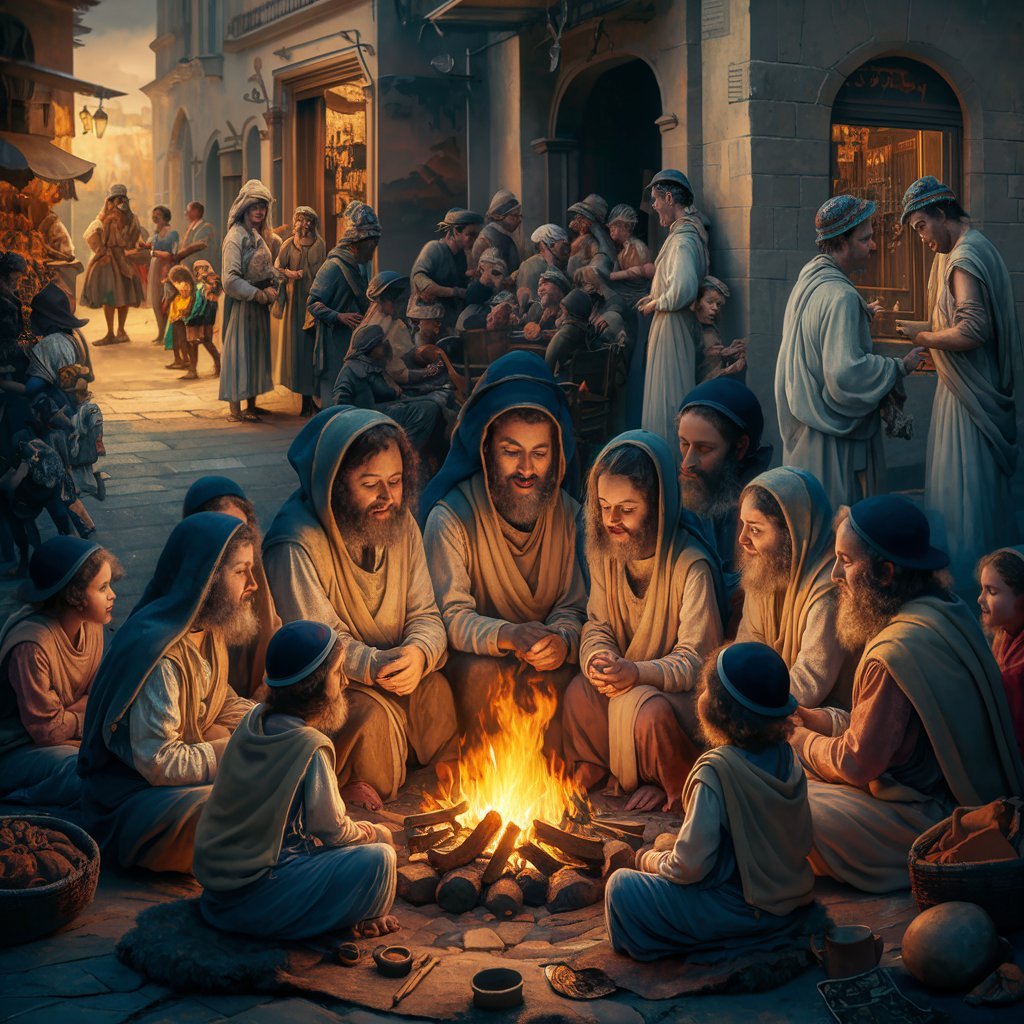
What is the intertestamental period in the Bible?
The Intertestamental Period is often neglected in many Sunday school sessions, even though this period set the stage for Christ’s ministry and the people’s expectations of the Messiah. So, what should we know about it?
The Intertestamental Period is the time between the Old and New Testaments. This period began with the end of the book of Malachi and concluded with the ministry of John the Baptist. The Intertestamental Period is also known as the Four Hundred Years of Silence; the Jews believed that prophecy had ceased at the beginning of this period. While prophecy may have ended, Israel was not entirely silent during this period and was conquered and reconquered several times. However, significant Jewish intellectual developments occurred during this time. Groups like the Pharisees and Sadducees rose to prominence during this period.
فرست محتوا
How long did the Intertestamental Period last?
The Intertestamental Period lasted about four hundred years—from 420 B.C. to the beginning of John the Baptist’s ministry around 20 A.D. This period roughly coincides with the Second Temple period of Israel. It is the time when the Temple was rebuilt after the exile and lasted until its destruction in 70 A.D. It was one of the most tumultuous periods in Israel’s history. As a result, they overcame and were defeated by many of the major powers of the time.
Read more : According to the Bible, are God and Jesus Christ the same person?
What happened during the Intertestamental Period?
The Intertestamental Period could make an amazing epic television series. Many empires conquered and reconquered Israel during this time. These empires included the Greek Empire of Alexander the Great, which shaped the culture of the entire period. Greek was the language of commerce during the Intertestamental Period. During this time, the Hebrew Bible was translated into Greek. This translation, known as the Septuagint (meaning seventy writers), was the predominant translation of the Bible during the New Testament era. It is the translation that New Testament writers used when quoting from the Bible.
The shift from Hebrew or Aramaic to Greek brought more attention to Judaism from people outside the Jewish culture. These individuals were known as God-fearers and played a significant role in the early church. They heard about Judaism and its teachings through the synagogue (another important development during the Intertestamental Period). As Jews moved across the Greek and Roman worlds, they brought their ideas and communities in the form of synagogues or gathering places with them.
Many books written during this period developed the theology that influenced people in Jesus’ time. These books include 1 and 2 Maccabees, which detail a revolution in Jerusalem in 168 B.C. The Maccabean Revolt is one of the critical points that point to a pattern that continued until Jesus’ time and until 70 A.D. Gamaliel refers to the Maccabean Revolt in Acts 5:34-39. This began a new pattern of uprising against the power structures of the day. Most Jews in Jesus’ time were pleading for the Messiah to drive out the oppressive Romans.
The Maccabean Revolt began after the ruling Seleucid Empire king, the empire established after Alexander the Great’s death, did something that shocked the Jews. He entered the Temple and sacrificed a pig on the altar in the most sacred place, desecrating it. Needless to say, the Jews did not take this well. As a result, Judas “The Hammer” Maccabeus (Maccabeus means hammer) led a revolution and established an independent kingdom in Israel. To overcome the Seleucids, he had to unite with various Jewish leaders. When his revolution succeeded, the Hasmonean dynasty began.
The Pharisees and Sadducees, theological groups most mentioned in the gospel narratives, developed after Judas Maccabeus established the Hasmonean dynasty. The Pharisees did not appreciate the Hasmonean dynasty much because the kings were not from the line of David. As a result, the Hasmoneans allied with the Sadducees. This is why the Sadducees had so much power during Jesus’ time and were known as the progressive upper class of society. During Jesus’ time, there were two other powerful groups: the Essenes, who lived separately from society in the desert, and the Zealots, who wanted to overthrow Rome.
After driving out the Seleucids, the Jews needed to rededicate the Temple and cleanse it from the desecrations imposed by Antiochus Epiphanes. At this time, the Jews lit a menorah to rededicate the Temple. There was only enough oil for one night, but miraculously, the menorah remained lit for all eight nights required for the rededication. This is known as the Festival of Dedication (John 10:22-23) or, as it is known today, Hanukkah.
The Hasmonean dynasty ended with the Roman invasion. The Romans installed a puppet kingdom with an Idumean named Herod as its figurehead. Herod was desperate to gain the Jews’ favor because he saw what happened to Antiochus Epiphanes, who disrespected their traditions. Herod went the other way and did everything he could to gain the Jews’ favor. His main way of doing this was expanding the Temple.
Other books written during the Intertestamental Period resemble later Jewish rabbinic literature. One of these books is the Book of Jubilees, the first surviving commentary on the book of Genesis. This book set the pace for other commentaries in the next thousand years of Judaism and began the Jewish interpretive tradition known as Midrash. The Book of Baruch, written at this time, was likely a response to Antiochus Epiphanes’ desecration of the Temple. It used historical language to deceive contemporary authorities into thinking it was discussing the Babylonian siege of Jerusalem. In reality, it was talking about the heinous acts of the Seleucid king and how the people responded to them.
Why did the Old Testament period end?
The Old Testament period ended when the last words of the prophets were recorded. There is no specific reason for the end of this period, and a large volume of writings have debated this issue.
All that can be said with certainty is that God changed the way He communicated with His people. There was also a change in people’s hearts. After the exile, there was a renewed zeal among the people of Israel to keep the Torah because the Jews did not want to go into exile again. They had access to the Torah, the writings, and the prophets (in Hebrew, the Tanakh). There was a new hunger for studying and keeping the Torah (from which groups like the Pharisees emerged).
When did the New Testament period end?
The New Testament period ended with the death of John the Apostle. John was the last direct disciple of Jesus, who died around 100 A.D. Narratives say he died at the age of 93 and witnessed the destruction of Herod’s Temple and the flight of believers and Jews from the area.
The destruction of the Temple occurred after several rebellions by Jewish leaders against Roman rulers, especially over issues such as new taxes and the use of Temple funds for Roman projects. By 70 A.D., Jerusalem was under the control of the Zealots, a radical insurgent group that Simon the disciple of Jesus was also a part of for a time. The Romans retook the city by besieging Jerusalem and then destroyed the Temple and its walls, forcing the Jews to leave.
The looting of Jerusalem by the Romans and the end of the New Testament period had several key consequences for Christianity. More people began writing books claiming divine inspiration (gospel narratives were falsely attributed to various disciples). However, all orthodox Christian groups agree that the Bible was closed after John’s Revelation was written.
The next generation (theologians like Polycarp, John’s disciple) provided new explanations and interpretations of the Bible, but the Bible itself was complete. Additionally, with the looting of Judea’s capital and the dispersion of Jews to other countries, Christianity became more associated with non-Jews than Jews. In the first few decades, outsiders often saw Christianity as a sect of Judaism. With the destruction of Judea as a nation, people increasingly saw Christianity as a religion separate from its Jewish roots.
What can we learn from the Intertestamental Period?
One of the most important lessons from the Intertestamental Period is to remain faithful when we feel God is silent. The Jews of this period faced persecution and endured many hardships. However, they persevered. They even ruled their nation for a time until the Romans came. The rebuilt city was only a fraction of its former glory (Ezra 3:12). Therefore, the Jews awaited the day the Messiah would come and drive out the authorities and power structures that prevented them from worshipping God in their desired way.
These were the expectations of the disciples and the Jewish authorities of the day from Jesus. It also shows how we should respond when God is silent. The Jews of this period are commendable for their commitment to studying the Torah and their eagerness to follow it. They recognized a change in how God communicated had occurred. They responded by studying what had been given to them. This is what believers should also do, dedicating themselves to studying the Bible as it is the primary way God communicates with His people.”




